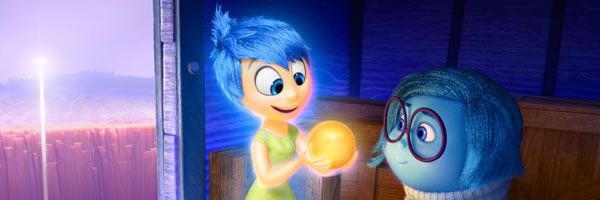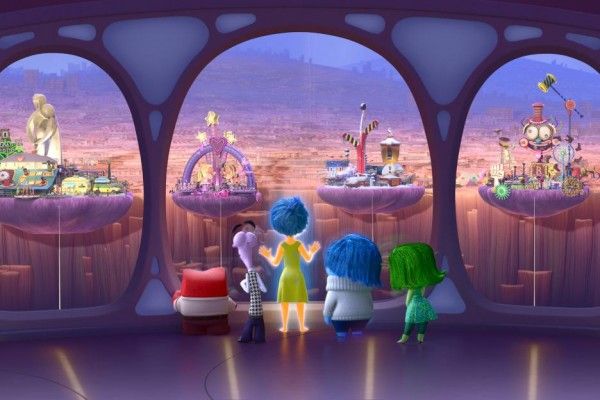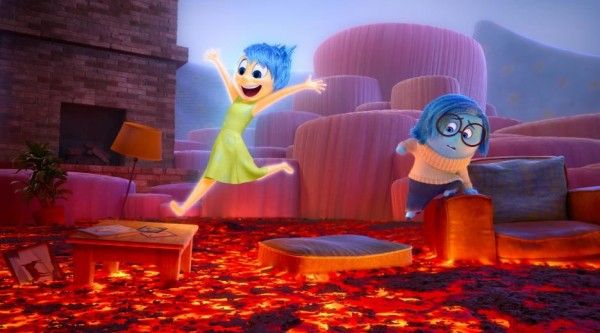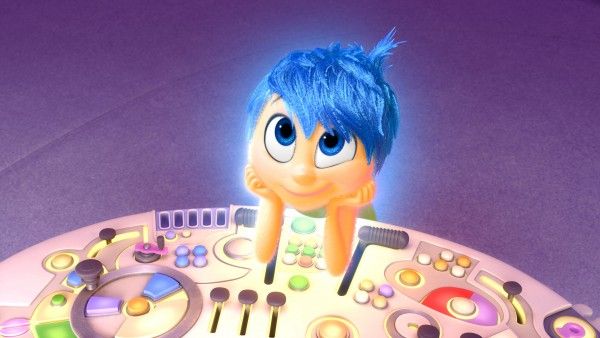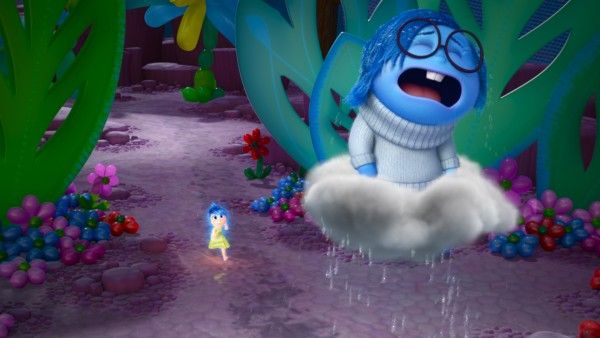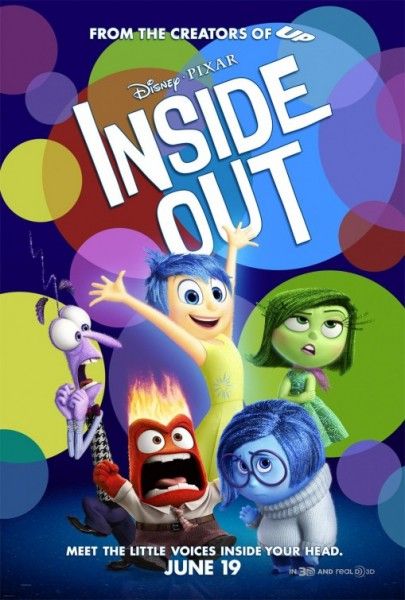In their past films, Pixar found their way to our hearts. It’s “When She Loved Me.” It’s “Define dancing.” It’s “And I look at you, I’m home.” But with their recent features, Pixar lost their emotional thread. Monsters University is a challenging and funny film, but it doesn’t really pull at the heartstrings when it needs to. Brave has a nice central relationship that feels neutered by meshing wacky hijinks with an earnest mother-daughter story. And Cars 2 only conjures emotions because we’re sad and disappointed that the studio could sink so low.
Inside Out is a return to form that alters the formula. Director Pete Docter seizes on the emotions that the studio lost by bringing those emotions to the forefront both literally and figuratively. He has found a story that’s not just universal, but also unique in its telling even among Pixar movies. A cross between Docter’s previous two Pixar films—Monsters Inc. and Up—Inside Out is still two characters going on a journey in a world made from scratch, but it’s more idea-driven than any other movie in the studio’s filmography. The film’s logic may be unclear and we may make some unusual and arguably unnecessary detours, but Inside Out is an emotional triumph that will make you weep in the best way possible.
Joy (Amy Poehler) is the leader in the mind of Riley Anderson (Kaitlyn Dias), an 11-year-old girl who is leaving Minnesota behind to move with her Mom (Diane Lane) and Dad (Kyle MacLachlan) to San Francisco. The cheerful emotion is joined by Sadness (Phyllis Smith), Fear (Bill Hader), Disgust (Mindy Kaling), and Anger (Lewis Black). Their job is to guide Riley’s life and create memory orbs, the most important of which are the core memories, which are all joyful. These core memories in turn power the aspects of Riley’s personality, which includes her love of hockey, being a goofball, her family, etc. While the other four emotions may seem negative, Joy thinks they all have a purpose except for Sadness. Riley’s life in San Francisco becomes much harder when Joy and Sadness get sucked into the recesses of Riley’s mind after wrestling over a sad core memory. Joy and Sadness must find their way back to headquarters while Fear, Disgust, and Anger try their best to muddle through.
It’s a complex concept, but the movie easily explains the basics within the first five minutes. Where Inside Out gets slightly confusing is who’s in control. Do the emotions guide Riley or do external events guide the emotions? When Riley gets upset at school, it’s because Sadness accidentally gets in the way of her emotional filter. But when baby Riley rejects broccoli, it’s because Disgust stepped in to respond to an external stimuli. As best as I can understand, it’s a give and take, and the logic doesn’t really get in the way because the purpose of the scene is always clear even if the mechanics aren’t.
But where the film really starts to expand are in the recesses of Riley’s mind, and this where Inside Out shows itself to be more about the journey than the characters. There’s still tension between Joy and Sadness, but they don’t click together like other Pixar protagonists. They don’t want to interact with each other, and at one point Joy literally has to drag Sadness along. Additionally, Joy and Sadness’ personalities can only change so much. Joy can’t become sad and Sadness can’t become joyful. The best they can do is work towards a mutual understanding.
The story provides a better traveling companion by having Joy and Sadness meet up with Bing Bong (Richard Kind), Riley’s childhood imaginary friend, who says he can guide them back to headquarters. The trio works better together than Joy and Sadness, who don’t really have the relationship arc we’ve seen from other Pixar buddies. Instead, the characters get to go on a journey, and I won’t spoil where they go other than say that the way these places are realized is ingenious. Pixar has taken us so many places, and Inside Out is arguably the most imaginative and daring to the point where we can forgive detours that don’t really further the plot.
But what makes Inside Out truly special is that the stakes of the situation and the cleverness of the setting lead to a grand emotional payoff. Docter is taking us to a place we’ve never seen before but we’ve all been there. We can all relate to Riley in one way or another because we’ve all felt her primary emotions, and we’ve wrestled with how they affect our lives. Which one is guiding the other is ultimately irrelevant because the emotional honesty is what matters the most. To place pristine internal logic ahead of everything else would not only turn the movie into an exercise; it would also be counter to the film’s point.
I saw Inside Out over a week ago, and the more I think about it, the more I love it. I love that it doesn’t have an antagonist and that the things that go wrong aren’t because of malevolent intent, but because, as in life, sometimes bad things happen and we react poorly to them. I love that the movie can be so incredibly funny and clever but what it’s really going for is allowing people to have a good cry but without it feeling manipulative.
Yes, Inside Out is a return to form for the studio, although with the troubled The Good Dinosaur on the way followed by more sequels, I don’t know if the studio will keep playing at this level. I hope they’ll continue to find their way to our hearts because when they put their mind to it, they take us to places of wonder where we love to laugh and we’re free to cry.
Rating: A

